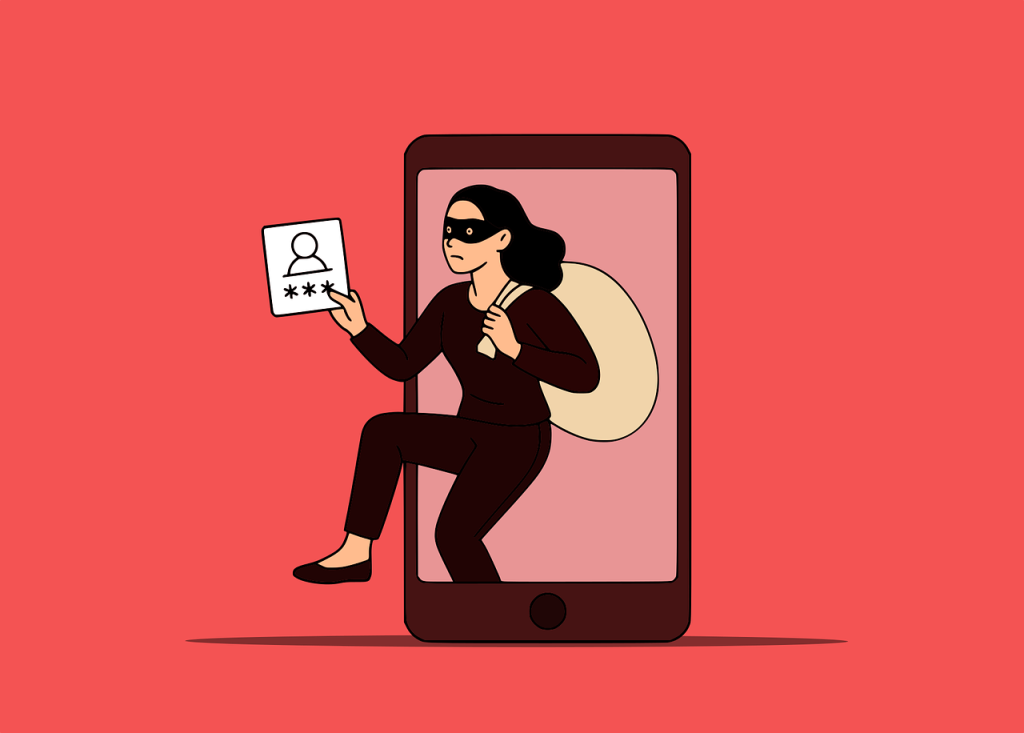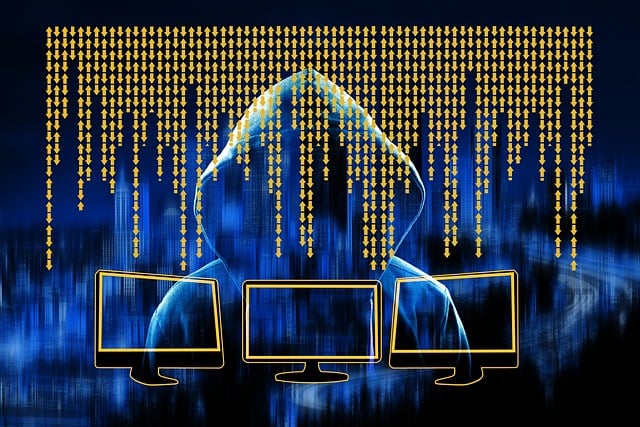Looking for a detailed list of the most popular types of cybercrimes in today’s digital world? Read on.
In this modern age, cybercrime refers to any criminal activity that involves a computer, networked device, or digital system. It can be carried out by individuals or organized groups, targeting victims across personal, corporate, and government levels.
Table of Contents
What Is Cybercrime?
Cybercrime is any illegal activity that uses computers, mobile devices, or internet-connected systems as either the tool, the target, or both. These crimes include data breaches, financial fraud, digital impersonation, ransomware, and more.
As technology evolves, so do the tactics of cybercriminals. Attacks are becoming more sophisticated and harder to detect, making it essential for individuals and organizations to understand the threat landscape.
A Brief History of Cybercrime
Cybercrime didn’t start with modern smartphones or social media. It began as far back as the 1970s, when “phone phreakers” used hacking tools to exploit computerized telephone systems and make long-distance calls for free.
Fast forward to the present, and cybercrime has exploded into a global issue. Today, cybercriminals are leveraging everything from artificial intelligence to cryptocurrency to execute high-level attacks that cost billions.
Why Cybercrime Is a Growing Threat
Today, individuals, governments, and organizations are losing billions of dollars annually to cybercrime. The FBI, one of the foremost agencies combating cybercrime, is currently investigating over 1,000 cyber-related cases in the United States alone.
Despite this rising threat, many people falsely believe they are immune—largely because they don’t understand how cybercrime works. Unfortunately, some only learn this after falling victim.
That’s why awareness is key. In this post, you’ll discover the most common types of cybercrime and how to protect yourself.
Categories of Cybercrime: How They Differ
Cybercrimes generally fall into a few categories:
- Financial Crimes: Involving theft, fraud, and extortion (e.g., phishing, identity theft).
- Data Crimes: Involving unauthorized access to private or sensitive information (e.g., hacking, ransomware).
- Psychological Manipulation: Where social engineering and cyberbullying are used to manipulate or harm.
- Infrastructure Attacks: Where networks and digital services are disrupted (e.g., DDoS attacks).
Understanding these categories helps you recognize different tactics used by cybercriminals.
The Big Problem With Cybercrime Awareness
Cybercrime isn’t a new phenomenon—it began as far back as the 1970s when early hackers manipulated computerized phone systems to make long-distance calls for free. However, the scale, complexity, and frequency of cybercrimes have skyrocketed in the 21st century.
Today, cybercrime costs individuals and organizations billions of dollars annually. The FBI, one of the top law enforcement agencies investigating cybercrimes, is currently handling over 1,000 cyber-related cases in the U.S. alone.
One of the main challenges in the fight against cybercrime is that many people wrongly assume they are immune, simply because they don’t understand how these crimes work. This ignorance makes them vulnerable.
This article explores the most popular types of cybercrimes you need to be aware of and offers suggestions on how to protect yourself.
Popular Types Of Cybercrimes
Distributed Denial of Service (DDoS)
DDoS attacks aim to overload a target system or network with a massive flood of traffic, thereby making the system unavailable to legitimate users.
Cybercriminals accomplish this by assembling a botnet—a network of compromised devices—which they use to send traffic simultaneously. These attacks can paralyze organizations, disrupt services, and cause massive financial and reputational damage.
Industries such as banking, e-commerce, and gaming are common DDoS targets. DDoS attacks often involve hijacked IoT devices, computers, and servers, which unknowingly contribute to the attack.
Protection Tip: Use traffic monitoring systems, CDNs (Content Delivery Networks), and anti-DDoS hardware/software solutions to detect and filter malicious traffic.
READ ALSO: 5 Certified Benefits of Identity Theft Protection
Identity Theft
Identity theft involves criminals stealing someone’s personal information—such as names, credit card numbers, or social security data—to commit fraud or impersonate the individual.
This stolen identity may be used for bank fraud, tax fraud, medical fraud, and even illegal immigration activities. Victims may not realize they’ve been compromised until they receive shocking bills or legal notices.
Protection Tip: Use strong passwords, avoid oversharing personal information online, monitor your credit reports, and be alert to phishing emails.
Hacking
Hacking is the unauthorized access to computer systems or networks. Hackers exploit vulnerabilities in software or hardware to gain access to sensitive data or systems.
From stealing financial data to tampering with public infrastructure, hackers can wreak havoc at multiple levels.
Protection Tip: Keep software updated, use two-factor authentication, and perform routine security audits.
Scamming
Scamming involves tricking victims into handing over money, data, or access using false promises, fake offers, or emotional manipulation.
Common scams include:
- Fake investment schemes
- Romance scams
- Lottery wins
- Tech support impersonation
Many scams are tailored to look extremely convincing, mimicking legitimate businesses.
Protection Tip: Be skeptical of “too-good-to-be-true” offers, research unknown contacts or organizations, and never send money to unverified sources.
READ ALSO: How To Start A Cybersecurity Company
Spamming
Spamming is the mass distribution of unsolicited and often malicious content via email or social media platforms. These spam messages frequently contain malware or phishing links.
While spam may seem like a mere nuisance, it is often the first step in more dangerous attacks like ransomware or identity theft.
Protection Tip: Install robust spam filters, avoid clicking unknown links, and do not download unexpected attachments.
Phishing
Phishing is a form of digital impersonation used to trick people into revealing confidential information. These attacks often impersonate banks, email providers, or social platforms.
Victims may receive an email that looks official and are then directed to a fake login page designed to harvest login credentials, bank info, or personal data.
Protection Tip: Always verify email sources, avoid clicking on links in suspicious emails, and report phishing attempts.
READ ALSO: 6 Online Security Tips for Seniors
Social Engineering
Social engineering relies on psychological manipulation rather than technical hacking. Cybercriminals use charm, fear, or urgency to trick users into voluntarily handing over confidential data.
For example, an attacker might call posing as a bank official to “verify your account information,” or pretend to be from IT support asking for your password.
Protection Tip: Stay skeptical, never share sensitive data over phone/email without confirmation, and train employees on social engineering tactics.
Cyberbullying
Cyberbullying is the use of digital platforms to harass, shame, threaten, or manipulate others. This is especially common on social media, messaging apps, and forums.
It can take the form of hate messages, online shaming, doxing (leaking private info), or sustained harassment. Cyberbullying can lead to serious emotional trauma, particularly for teens and young adults.
Protection Tip: Report abusers, block their accounts, involve school or legal authorities, and promote digital responsibility.
READ ALSO: Exclusive Tips To Stop Cyberbullying [For Teens, Parents & Schools]
How To Protect Yourself Against Cybercrimes
Protecting yourself online involves both technical and behavioral measures:
- Install and update antivirus and firewall software.
- Use unique, strong passwords for each account.
- Enable multi-factor authentication.
- Never share sensitive information via email or over the phone.
- Avoid public Wi-Fi for financial transactions.
- Regularly back up your data.
- Implement zero trust network architecture in your organization
- Educate family members and staff about common threats.
These best practices form the first line of defense against modern cybercrime.
FAQs About Cybercrimes In The 21st Century
What is considered a cybercrime in today’s digital age?
A cybercrime is any criminal activity that uses a computer, internet, or digital device as a tool or target. This includes actions like stealing personal data, hacking into systems, spreading malware, or deceiving people for financial gain. It covers a wide range—from simple phishing attempts to highly coordinated ransomware attacks against large corporations.
How do cybercriminals choose their targets?
Cybercriminals often target those who show signs of weak cybersecurity practices. Individuals who reuse passwords, click on suspicious links, or share too much personal data online are prime targets. Businesses with outdated software, untrained staff, or no backup systems are also at high risk.
What are the financial consequences of cybercrime?
Cybercrime can result in massive financial losses. For individuals, this may involve stolen credit card data, drained bank accounts, or identity fraud. For businesses, costs include ransom payments, downtime, legal penalties, and loss of customer trust. The global cost of cybercrime is projected to reach $10.5 trillion annually by 2025.
Can cybercrimes be prevented entirely?
While no system is entirely immune, most cybercrimes can be prevented with proper precautions. These include using multi-factor authentication, firewalls, employee training, regular updates, and strong passwords. Human error is often the weak link, so awareness and vigilance are key.
How is cybercrime different from traditional crime?
Cybercrime differs from traditional crime mainly in its non-physical nature and borderless reach. A cybercriminal in one country can attack a victim on the other side of the world without ever leaving their home. Traditional law enforcement tools often struggle to catch these criminals due to jurisdictional limitations.
What are the most common tools used by cybercriminals?
Cybercriminals often use tools such as:
- Phishing kits (to create fake websites)
- Keyloggers (to record keystrokes)
- Botnets (to execute DDoS attacks)
- Trojan horses and ransomware
- Password crackers
They also exploit weaknesses in outdated software and unsecured networks.
What role does social media play in cybercrimes?
Social media is a goldmine for cybercriminals. People share personal details such as birthdays, family names, and locations—information that can be used for social engineering or identity theft. Fake profiles are also used in romance scams, phishing, and spreading malware.
Are children and teenagers at risk of cybercrime?
Absolutely. Children are often targeted for cyberbullying, online grooming, and sextortion. Their lack of awareness makes them easy victims. That’s why parental controls, regular guidance, and cyber hygiene education are essential for protecting minors online.
Is reporting cybercrime important?
Yes. Reporting cybercrime helps authorities track down offenders and prevent similar attacks on others. Victims should contact their national cybercrime unit, local police, or platforms like the FBI’s Internet Crime Complaint Center (IC3) or Europol’s cybercrime reporting center.
What is the future of cybercrime?
Cybercrime is expected to evolve with technology. With the rise of AI, IoT, quantum computing, and deepfakes, new forms of cyber threats are emerging. This means cybersecurity must also evolve—focusing on adaptive defenses, AI-powered threat detection, and global cooperation to tackle increasingly complex attacks.
Conclusion
In conclusion, cybercrime is arguably the most pressing digital threat of the 21st century. With attacks becoming more sophisticated and widespread, awareness is your first line of defense.
By understanding the popular types of cybercrimes and implementing protective measures, you can drastically reduce your risk of becoming a victim. Start today—stay informed, stay secure.
RELATED POSTS
- Top Countries Notable for Cyber Criminals
- 12 Worst Data Breaches In History
- Exclusive Interview with SpyCloud’s CEO and Co-Founder Ted Ross
- How to Protect Your SaaS Applications Against Ransomware
- GateHub Cryptocurrency Website Hack exposes 2 Million Wallets
- Is Cyberbullying Worse Than Ever Before?
- 7 Actionable Steps To Prevent And Control Cybercrimes
- Today’s Most Common Threats Against Cybersecurity
About the Author:
Abraham Faisal is a professional content writer. He has a strong passion for online privacy, cybersecurity and blockchain and is an advocate for online privacy. He has been writing about these topics since 2018 and is a regular contributor to a number of publications. He has a degree in Computer Science and has in-depth knowledge of the ever-evolving world of digital security. In his free time, he likes to travel and explore new cultures.











